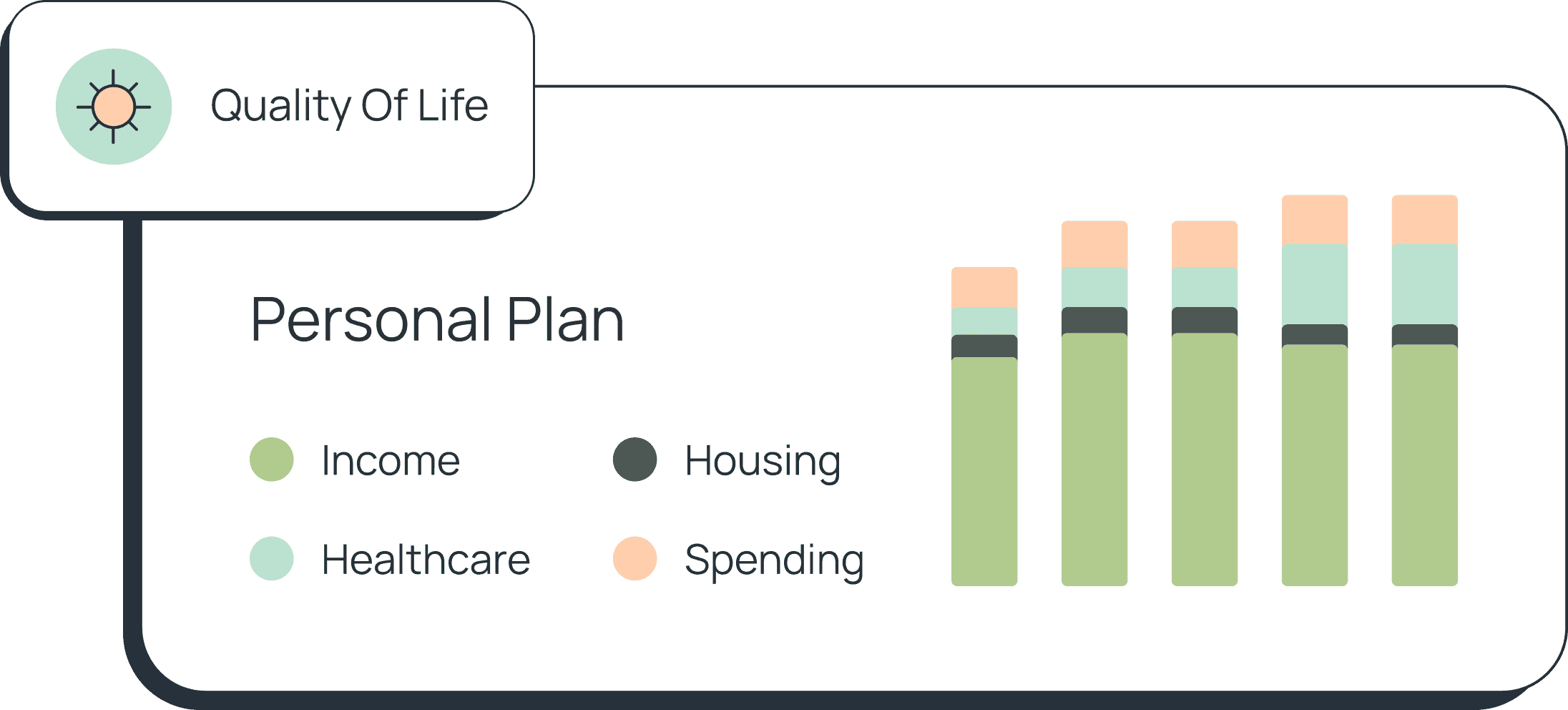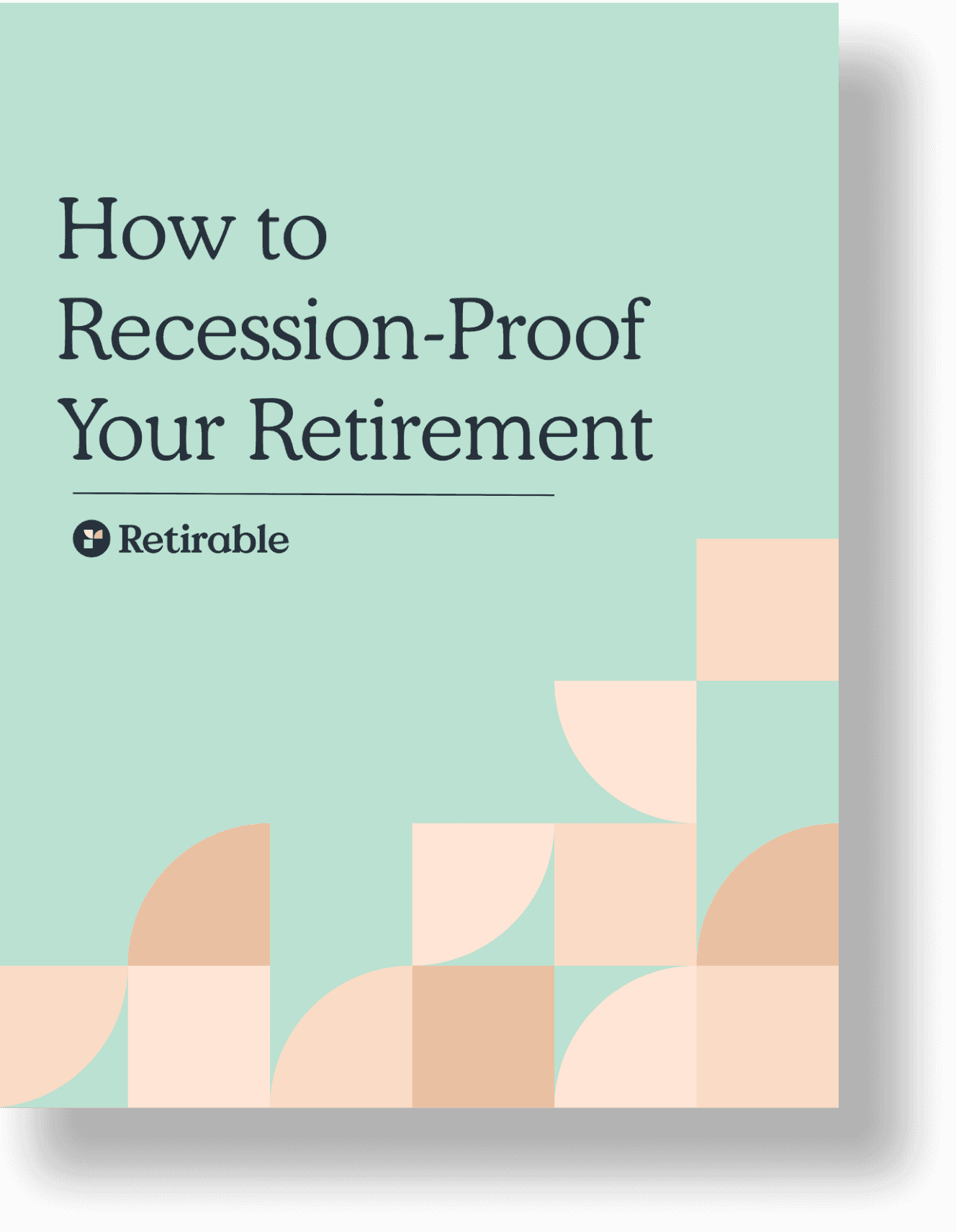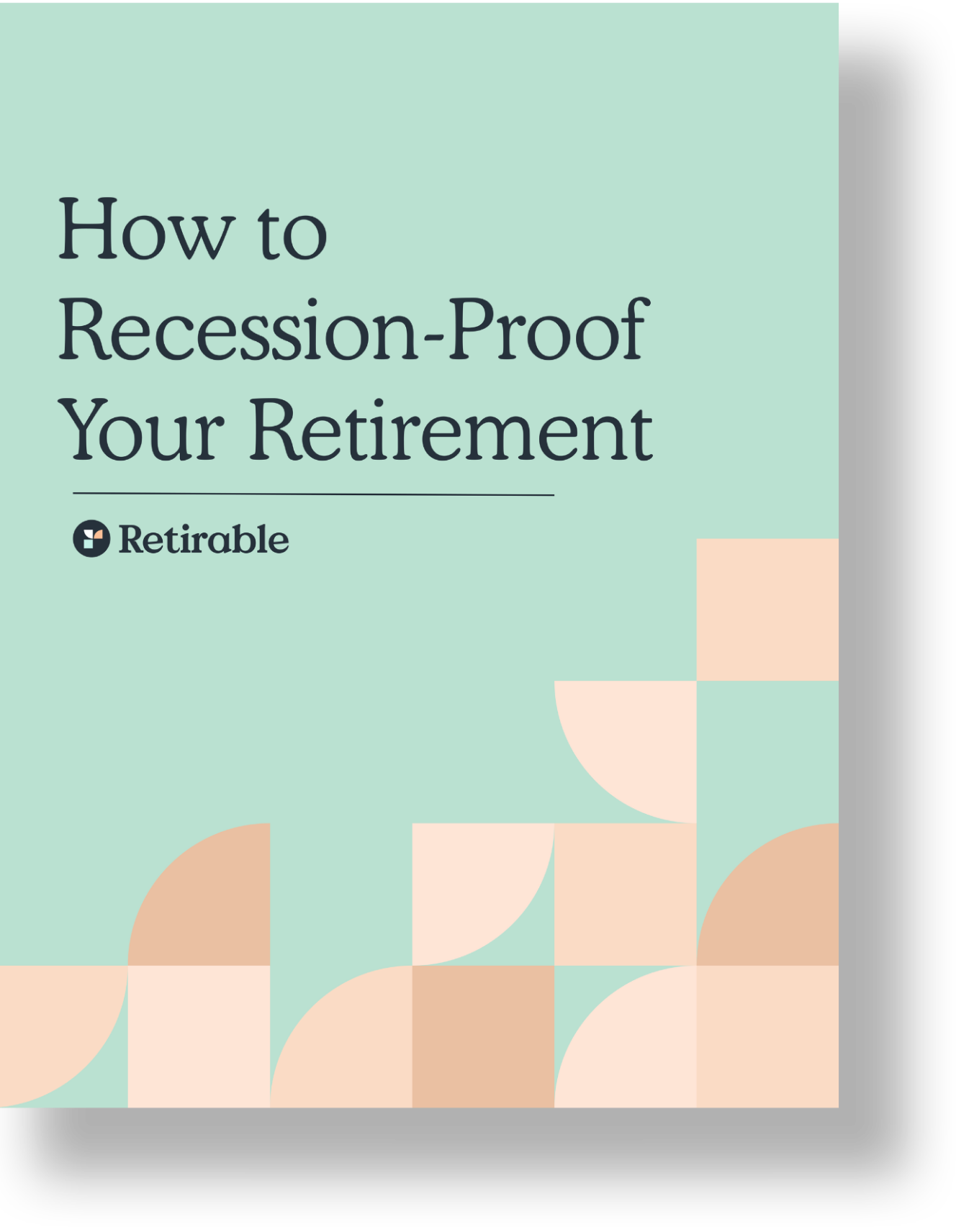Retirement Accounts
Saving for retirement can be daunting. Lots of websites, economists, and financial advisors throw out rules and methods to swear by, but don’t take into account that the best retirement plan is personalized and holistic. Learn how far different savings amounts will take you and if that matches your preferred lifestyle and plans for retirement.

C.E Larusso
•
Published July 19th, 2024
Table of Contents
Key Takeaways
Try to save at least 15% of your salary each year, and take advantage of any employer-sponsored retirement plans—especially if they come with matching contributions
While the 4% withdrawal rule was popular in the past, it might be too generous now; consider saving with a 3% yearly withdrawal in mind
$500,000 might be enough to retire, if your costs are low and you plan to live very frugally, but $1 million or more will afford you much more comfort and flexibility
Saving for retirement can be daunting—lots of websites, economists, and financial advisors throw out lots of rules and methods to swear by, but don’t take into account that the best retirement plan is personalized and holistic. To save smartly, and hit major milestones that keep you on track for a comfortable retirement, learn how far different savings amounts will take you and if that meshes with your preferred lifestyle and plans for the future.
How Much Should You Have Saved for Retirement?
We can’t give you one, singular, magic number, because each person’s retirement goals are different. We can, however, offer some guidelines you can follow to help you stay on track and mark major benchmarks. For instance, it’s widely suggested that saving 15% of your annual salary is a good starting point to get you to a comfortable savings for retirement. While a nice rule of thumb, this recommendation assumes you start saving early in life—likely by age 25 if you want to retire at 62 or by age 35 if you want to retire by 65. It also assumes that you will be comfortable with a retirement income equal to about 60–80% of what you currently earn—most studies show this is a good range, but you may require more or less depending on your health, planned expenditures, etc. Coming to a specific dollar amount is difficult because there are too many variables: your current age, when you plan to retire (or possibly when you’re forced to retire due to sickness or another life event), job loss, how long you might live, your planned lifestyle during retirement, and much more.
Savings Benchmarks by Age
Another popular way to calculate whether your savings is on track is to look at benchmarks by age. Some financial advisors suggest that you save specific multiples of your salary by the time you reach certain ages, until you reach 10x (or more) at retirement age.
| Age | Savings Benchmarks |
|---|---|
| 30 | 1x of salary saved today |
| 35 | 2x salary saved today |
| 40 | 3x salary saved today |
| 45 | 4x salary saved today |
| 50 | 6x salary saved today |
| 55 | 7x salary saved today |
| 60 | 8x salary saved today |
| 65 | 10x salary saved today |
Benchmarks to Achieve Closer to Retirement
The two methods we mentioned (15% savings per year and salary multiples by age) are two ways to start to benchmark your savings progress. Another popular method for saving is the 4% rule. This rule states that you should be able to take 4% from your savings each year, and can increase the amount to keep pace with inflation, giving you 30 years of withdrawals and retirement income. Following that rule, for every $10,000 per year you want to spend in retirement, you’ll need $250,000 in savings.
Many economists think the 4% rule is too generous, and suggest 3% as a starting point instead. Ultimately, choosing the methods and benchmarks to keep your retirement savings on track should happen after consulting with a trusted financial advisor; they can take a look at where you’re at, help you make smart investments, and also map out what kind of retirement life you want. It’s very different to plan for a relaxed 20 years in Honolulu than it is to plan for one in Oxford, Mississippi.
How Much from Your Monthly Paycheck Should You Set Aside?
To achieve the benchmarks outlined above, it’s recommended that you save 15% of your gross income and put it into your 401(k) or IRA. While this might feel like a daunting amount, remember that most employers have matching contribution plans, so if you can save 9% and your matching contribution amount is 6%, you’ll reach your goal for the year! And of course, exceeding the 15%, especially earlier in life, will get you to your retirement goals sooner or help you save more to retire more comfortably.
The U.S. Census Bureau lists the median household income at about $70,800. Saving 15% of that would be $10,620 every year, or $885 per month. Assuming an 11% return rate, that amount would become $2.48 million after 30 years—so you can see why starting your savings early is crucial. For an additional perspective, if you only saved 10% per year as opposed to 15%, you’d see $1.65 million after 30 years—a sizable difference from $2.48 million.
Common Methods to Help You with Retirement
First things first: remember that it’s never too late to start saving. While it’s always best to start as early as possible in life to maximize returns, you can and should start saving anytime in life, and anytime is better than never. That said, keep these tips and methods in mind as you build your nest egg for retirement.
Retirement Accounts Such as a 401(k) and Roth IRA
Make sure you opt in to any employer-sponsored retirement plans, such as 401(k)s, 403(b)s, or IRAs. Contributing to your plan will lower your taxable income, and typically you can have contributions automatically deducted from your paycheck, making saving easy.
Matching Your Employer when Possible
If your employer offers matching contributions, make sure to contribute the maximum allowed for the match (or more, ideally). So, if your employer matches 5% of your contributions, you should contribute at least 5% to get the matching amount (but ideally 10%, to hit your 15% per year goal). Don’t forget to read about any vesting rules—some companies require that you be an employee for a certain number of years before they let you keep the contributions they made to your plan.
Make Catch-up Contributions Later in Life
If you find yourself behind your retirement savings benchmarks, you can use catch-up contributions—allowed after you turn 50—to make up for the past. In 2023, you can contribute an additional $6,500 to your IRA or $7,500 to your 401(k) or 403(b) plan.
Diversify Your Portfolio & Investing Style
Diversifying your portfolio of assets will ensure that you limit the overall risk of your portfolio; having too much of one asset means that if it performs poorly, your entire portfolio could tumble. With a diverse set of assets, you’ll have room for one to have some lows (and hopefully some highs later on) as you’ll have others to provide security.
In your 20s and 30s, you might choose various equities, like small-cap stocks and funds. Later, in your 40s and 50s, you may wish to hold more conservative assets like corporate bonds and precious metals. A trusted, knowledgeable financial advisor can guide you throughout the process and help you pick the right investments based on your age, retirement goals, and risk tolerance.
Protect yourself from scams and fraud.
Every Retirable client is protected with $1M in identity theft insurance.Achieving a "Savings" Mentality with High Inflation
Given that the last few years have seen higher-than-usual inflation rates, it’s natural and wise to consider how inflation should affect your retirement savings strategy and planning. For the best advice, you should consult a Certified Financial Planner (CFP®), as they will be able to assess your current situation and develop a roadmap for how to achieve your goals while hedging for inflation. With or without an advisor by your side, you should also consider these tips:
- Stay on track of your retirement savings benchmarks, and consider catch-up contributions (allowed after age 50) if you fall behind.
- Adjust your portfolio for inflation—generally, the closer you get to retirement, you’ll want to shift from a stock-heavy portfolio to one with more bonds. Long-term, stocks can weather ups and downs of inflation, but as you inch closer to retirement you’ll want steady, sure assets, even if they have lower return rates.
- Delay receiving social security, if possible, as your benefits will be adjusted for inflation. If you wait until age 70 to start collecting your benefits, your payout will be 97% higher than if you started collecting at age 67.
- Plan to spend less. If you don’t want to delay retirement and wait for inflation to cool off, you might need to plan for a few years of more austere spending to account for the economic climate.
How Much Money do I Need to Retire?
Generally speaking, you should anticipate needing 80% of your pre-retirement income for every year of retirement. So if you currently make $100,000 now, expect to spend $80,000 each year of retirement. This rule of thumb assumes your lifestyle only shifts slightly; you should have fewer expenses as a retired person, but you also want to be comfortable and have some funds left over for unexpected bills. You might also wish to have the exact same salary you have now; if that’s the case, you’ll need to calculate your savings plan accordingly.
Here’s a quick scenario: Let’s say you earn a salary of $50,000 and wish to retire at age 67. You currently have $10,000 saved for retirement, and want $50,000 (after taxes) each year of retirement, with a life expectancy of 87, for a total of 20 years of savings needed.
If your anticipated Social Security benefit is the average of $1,781.63, you’ll need to save $28,000 per year to meet your goal.
Can I Retire with $500k?
You can retire with $500,000 if you want to live a leaner lifestyle. If you withdraw 4% of your savings each year, you will have access to approximately $20,000 per year ($1,667 per month) for 20 years—that’s not a lot of money, so you’ll need to calculate how much your current lifestyle and expenditures are per month, and if this will be enough to carry you for the rest of your life. You could also choose to retire later, as your $500,000 will give you more each month and year if it only needs to last for 10 years instead of 20. Many economists believe that the 4% rule is too generous, and given inflation and other factors, 3% might be a better withdrawal strategy, but everyone’s life and needs are different.
There are some factors that may allow you to retire on $500,000, such as:
- You have already paid off your mortgage and own your home free and clean, without monthly payments
- You have no dependents—either your children are fully grown and self-sufficient, or you do not have any, and you do not need to care for aging parents or other family members
- You are healthy, plan to maintain a healthy lifestyle, and do not foresee any major medical expenses
- You can commit to living frugally
- You will be able to collect Social Security benefits to boost your monthly income
Sample Budget for a $500,000 Retirement:
This budget assumes the retiree is collecting Social Security benefits of at least $1,413 per month, and will withdraw 3.5% of their retirement savings per year, for a monthly take-home of roughly $2,871. This budget also allows for some wiggle room, so you won’t be living paycheck-to-paycheck each month and can hopefully save some each month for travel and other fun activities.
- Housing costs: $600–$700 per month
- Utilities: $50–$75
- Transportation: $100–$200
- Food: $100–$200
- Clothing: $100–$200
- Entertainment: $200–$300
- Unexpected expenses/nest egg emergency savings (medical care, etc.): $500
- Expected monthly expenses: $1,850–$2,175
- Expected investment return: 7–8%
Where Can I Retire Comfortably With $500k?
On a lean retirement, you’ll want to look into states that are very tax-friendly. Florida, Mississippi, and Arizona are all tax-friendly states with relatively low housing costs. In Florida and Arizona, though, housing costs are usually in the $1,000 to $2,000 range, so our budget works best if you can buy a home outright by selling your current home (and turn a profit in the process). In Mississippi, housing costs are quite low and you can typically secure a one-bedroom apartment for $700–$900.
Ultimately, even in the least expensive states, life in the US is more expensive than many other places in the world, so stretching your $500,000 might work best abroad. There are several countries where average rent is less than $600, including:
- Mexico
- Thailand
- Costa Rica
- Peru
- Indonesia
These countries offer beautiful weather and a much lower cost-of-living. And, in the case of Mexico, you’ll only be a short flight from the US.
Can I Retire With $1 Million?
Retiring with $1 million will net you about $40,000 per year for 20 years. As with the $500,000 savings, you will net larger monthly pay-outs if you wait and only need to rely on your savings for 10 or 15 years instead of 20. You’ll still need to budget out your income each month, but $1 million is a sizable jump from $500,000 and will allow you to live more comfortably.
Sample Budget for a $1 Million Retirement:
Assuming the same calculations as above with regards to Social Security, your $1 million savings should net you about $4,700 per month to live off of for 20 years. This amount will give you a much wider range of locations to live in, including many US metropolitans.
- Housing costs: $1,000–$1,200
- Utilities: $75–$100
- Transportation: $100–$200
- Food: $200–$300
- Clothing: $200–$300
- Entertainment: $300–$400
- Unexpected expenses/nest egg emergency savings (medical care, etc.): $700
- Expected monthly expenses: $2,575–$3,200
- Expected investment return: 7–8%
Where Can I Retire Comfortably With $1 million?
You can retire to many of the larger US cities if you only need to stretch your $1 million for 10 or 15 years—estimates say that $1 million will last you 14 years in New York and 13 years in California. Your $1 million will go a lot further in less expensive states, such as Texas, Pennsylvania, and North Carolina (19–21 years). As with the $500,000, $1 million goes a lot further in some other countries, such as:
- Singapore (~30 years)
- Ireland (~39 years)
- Puerto Rico (~58 years)
- Costa Rica (~74 years)
In addition, $1 million in savings, coupled with your Social Security benefits, should be enough for you to live in a major city abroad, which might not be possible in America.
Can I Retire with $2 Million?
A 3.5% withdrawal rate on a retirement nest egg of $2 million dollars is about $70,000 per year (roughly $6,668 per month) for 20 years. Factor in the average Social Security benefit and you’re looking at about $8,000 per month. This amount will definitely give you more flexibility in terms of choosing where you want to live, and having funds left over for travel, etc. If you have paid off your mortgage and have no housing costs, you’ll have a decent amount of money to spend during retirement and enjoy those work-free years.
Sample Budget for a $500,000 Retirement
- Housing costs: $1,200–$1,500
- Utilities: $75–$100
- Transportation: $150–$250
- Food: $300–$400
- Clothing: $300–$400
- Entertainment: $500–$600
- Unexpected expenses/nest egg emergency savings (medical care, etc.): $1,500
- Expected monthly expenses: $4,025–$4,750
- Expected investment return: 7–8%
Where Can I Retire Comfortably With $2 Million?
Here’s the good news: you can choose to retire in any state and make $2 million last at least 20 years—Hawaii’s cost of living, being extraordinarily high, might only get you 20 years, but that’s still 20 years work-free in Hawaii. You can opt for other states if you want your savings to last you longer: $2 million lasts over 30 years in Washington, New Jersey, and Colorado, and over 40 in North Carolina, Louisiana, and Michigan. Housing will always be the largest cost, so if you are able to live in your home with a paid off mortgage, or sell it and downsize so you can pay for your new home in cash, you will significantly reduce your monthly costs.
Similar to the US, having $2 million saved will open up international retirement locations. Several cities are in reach, including:
- Berlin, Germany
- Rome, Italy
- Madrid, Spain
- Sao Paulo, Brazil
All of these places have an average cost-of-living under $2,000. If you’re considering moving abroad, you’ll need to investigate the visa and tax rules; sometimes you’ll need to pay taxes in both the US and in your new country. In addition, even though we list several European cities here, the Euro is almost almost stronger than the dollar, meaning that for every day activities, your dollar will be worth a little less in those locations. That’s worth considering, when you weigh the fact that in Sao Paulo, the dollar is equivalent to about five Brazilian reals—about the cost of a loaf of bread or a two-pound bag of potatoes.
Frequently Asked Questions
You asked. We answered.
Can a couple retire on $1 million dollars?
Sure, if you plan to live frugally. Ideally, you have paid off your home and don’t have housing expenses, and both of you will have a decent Social Security payout. If that’s the case, you can expect to have roughly $6,000 to spend on all other expenses. For many people, that’s not enough to cover the bills and higher costs of living that come with residing in major US cities, but you could live somewhere less expensive (Georgia, Florida, South Carolina, Mississippi) to make your money go farther.
How much should I save for retirement per month?
You should aim to save 15% of your pre-tax income. Hopefully, your employer has matching contributions as an employee benefit—if they match 5% of your contributions, then you only need to save 10% of your own paycheck, as the other 5% will come from your workplace. Be sure to read about any vesting rules that might exist; sometimes, you can only keep the matching contributions if you’ve been at the company for a certain number of years, usually two to five.
Is $150,000 a good retirement income?
There’s no right answer to this question, as $150,000 income in one place can be very little (New York or Hawaii) but in other places can go very far (Michigan, the Carolinas, Florida). You might also have different retirement plans—some people are happy to garden every day, while others wish to travel the world. Generally speaking, $150,000 is a very good income to live off of, and more than most people make during their working years, but if you plan to stay at five-star hotels on every vacation, it might not be quite enough.
Share this advice

A professional content writer, C.E. Larusso has written about all things home, finance, family, and wellness for a variety of publications, including Angi, HomeLight, Noodle, and Mimi. She is based in Los Angeles.
Share this advice

A professional content writer, C.E. Larusso has written about all things home, finance, family, and wellness for a variety of publications, including Angi, HomeLight, Noodle, and Mimi. She is based in Los Angeles.
Free Retirement Consultation
Still have questions about how to properly plan for retirement? Speak with a licensed fiduciary for free.






